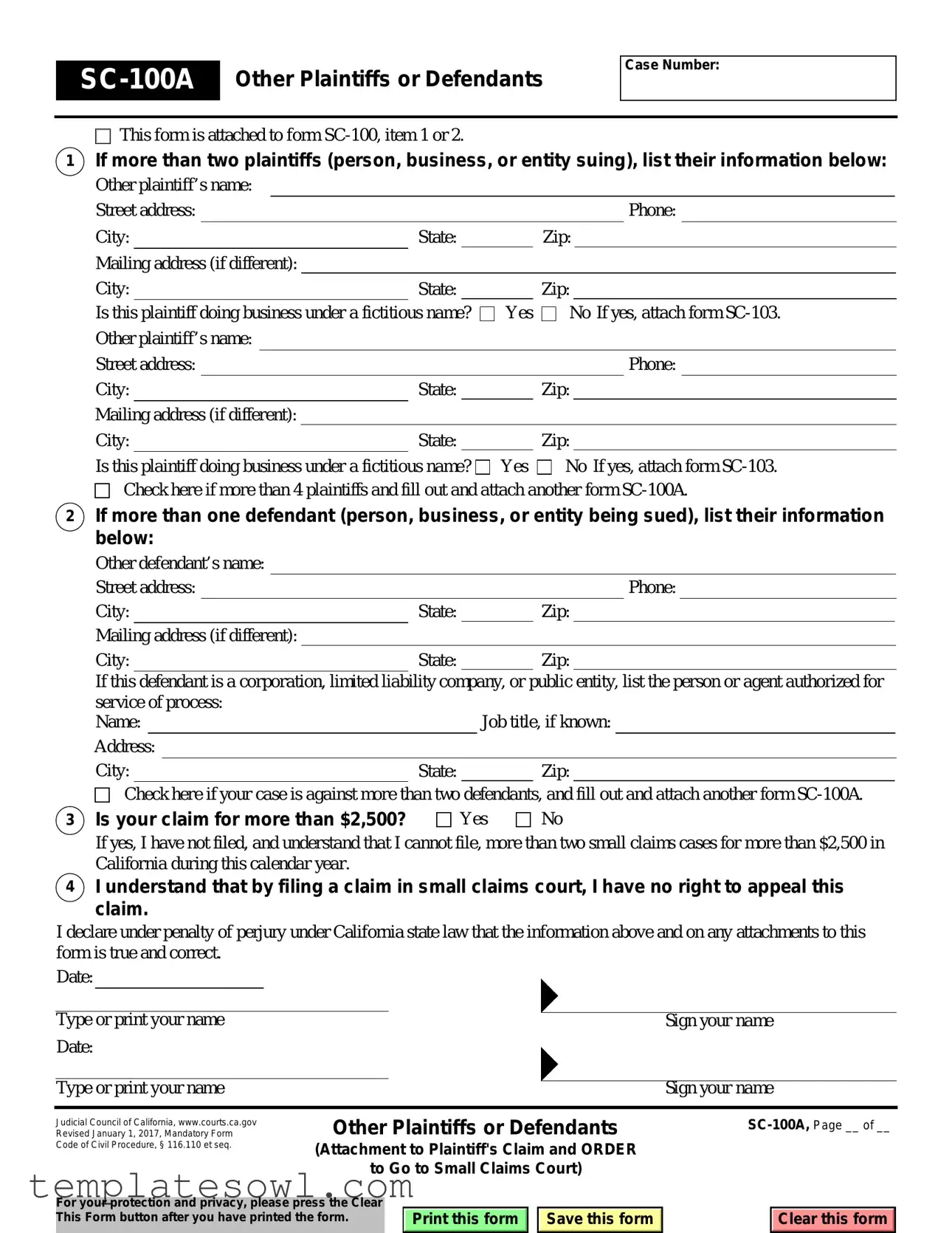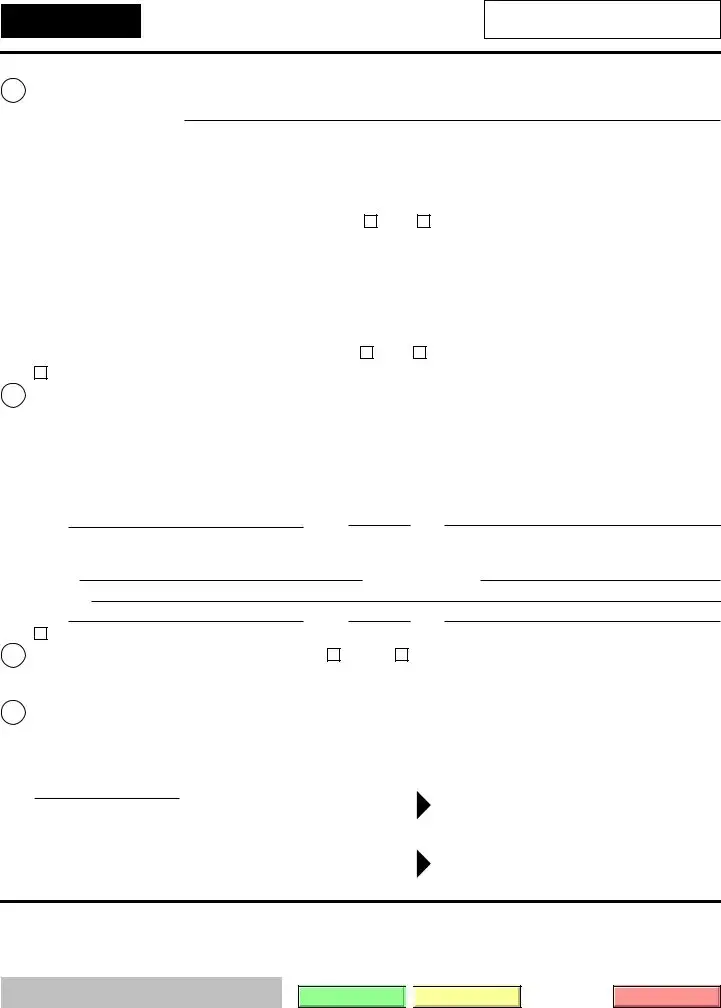What is the SC-100A form and when do I need to use it?
The SC-100A form is an attachment to the primary Small Claims form SC-100. It is specifically utilized when you have additional plaintiffs or defendants involved in your case, beyond the two that can be listed directly on the SC-100. If you're filing a claim and there are more than two parties, be prepared to fill out one or more SC-100A forms to ensure that everyone is listed accurately.
How do I fill out the SC-100A form?
Begin by providing detailed information about each additional plaintiff or defendant, including their names, addresses, and contact details. If a party is doing business under a fictitious name, make sure to indicate this by checking the appropriate box and attaching the necessary SC-103 form. As you list more than four plaintiffs or two defendants, remember to attach additional SC-100A forms as needed. Accuracy is vital, so take your time and double-check your entries.
What should I do if I have more than four plaintiffs?
If your case involves more than four plaintiffs, you should check the designated box on the SC-100A form and attach another SC-100A, allowing you to include their information. This ensures that all plaintiffs are acknowledged in the filing process, which is essential for the case to proceed smoothly.
Is there a limitation on the amount I can claim in small claims court?
Yes, if your claim exceeds $2,500, be aware that California law limits how many such claims you can file in a calendar year. Specifically, you can only file two small claims involving amounts greater than $2,500. It’s crucial to keep this restriction in mind when deciding how to handle your claims.
What happens if I file a claim in small claims court?
Filing a claim in small claims court can be a significant step. However, it's important to understand that once you file your claim, you do not have the right to appeal the decision made by the court. Therefore, taking the time to gather all necessary evidence and being prepared for your hearing is essential to facilitate a just resolution.
What is the declaration under penalty of perjury?
This declaration aspect of the form states that you swear the information you provided is true and correct under California law. This is a serious commitment, as providing false information may lead to legal repercussions. Make sure to review all entries carefully before signing, ensuring that everything is accurate and up-to-date.


 This form is attached to form
This form is attached to form 
 Save this form
Save this form